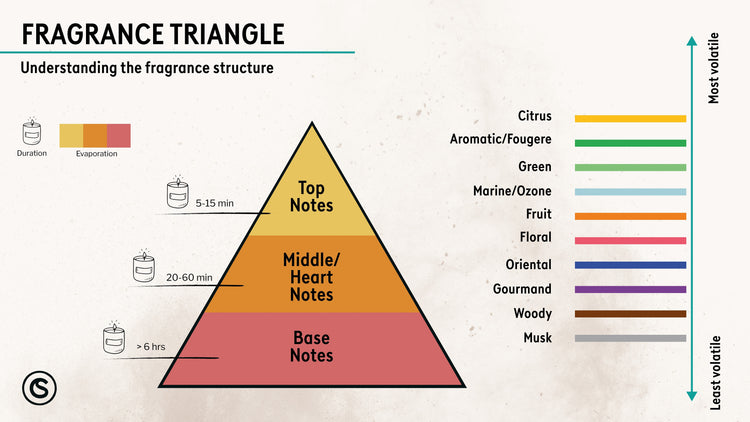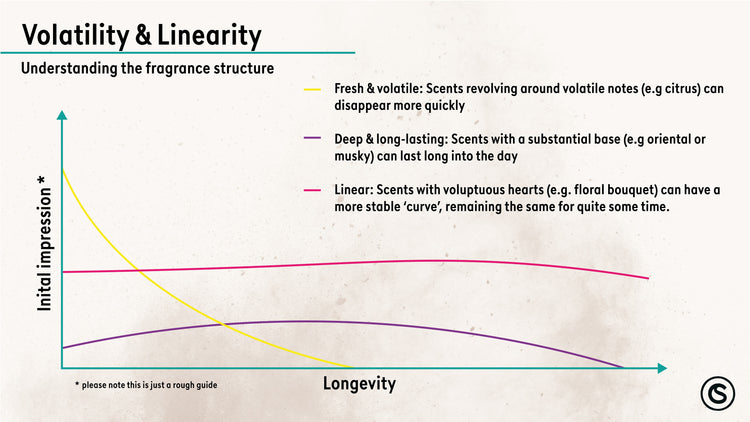Understanding Fragrances: A look into the Fragrance Pyramid
Fragrances enchant our senses, evoke emotions, and trigger memories in a way few other sensory experiences can. At the heart of understanding how fragrances unfold their complexity and depth lies the concept of the fragrance pyramid. This pyramid is crucial for both creators and consumers, serving as a guide to the intricate makeup of perfume notes in a home fragrance product or candle.
The Structure of the Fragrance Pyramid
The fragrance pyramid divides a scent into three main sections: top, middle, and base notes, each representing different facets and layers of the fragrance. This structure helps in understanding how a fragrance evolves from the moment it is first experienced to the lingering after-scent.
- Top Notes: These are the initial impressions of the fragrance, the scents that greet you upon first application. They are usually light, fresh, and vibrant, designed to attract but evaporate quickly, leading you into the heart of the fragrance. Citrus, light fruits, and herbaceous scents often occupy this layer. These scents are made up of the most volatile and short lived chemical compounds and as such only last up to around 15 minutes.
- Middle Notes: Also known as heart notes, they represent the core of the fragrance composition. Middle notes emerge just as the top notes begin to fade, bringing depth and body to the scent. Floral, spice, and semi-sweet fruit scents are typical in this category, providing a smooth transition to the deeper base notes. These notes are less volatile than the top notes and will linger for up to an hour or so.
- Base Notes: The foundation of the fragrance, base notes, give it longevity and depth. These rich, heavy scents emerge slowly and linger the longest, providing warmth and lasting impression. Common base notes include musk, vanilla, amber, and woody scents. These are the least volatile of all of the chemical compounds and are the last to dissipate, lingering for up to 6 hours.
Influence of composition on the fragrance
The composition of a fragrance, specifically the balance and types of top, middle, and base notes, directly affects its linearity (How the fragrance changes over time). A fragrance with a dominant base note and minimal top and middle notes might appear more linear and unchanging, as the base note's presence is felt throughout the fragrance's life. Conversely, a well-balanced fragrance with distinct top, middle, and base notes will exhibit a more traditional, non-linear evolution as it transitions from the initial burst of top notes to the depth of the base notes.
This blog is intended to be a very simplified introduction to fragrance composition.
Professional perfumers and perfume houses use traditional techniques and state of the art science to create, combine and refine scents to create the wonderful range of luxurious fragrances that are on the market today.




